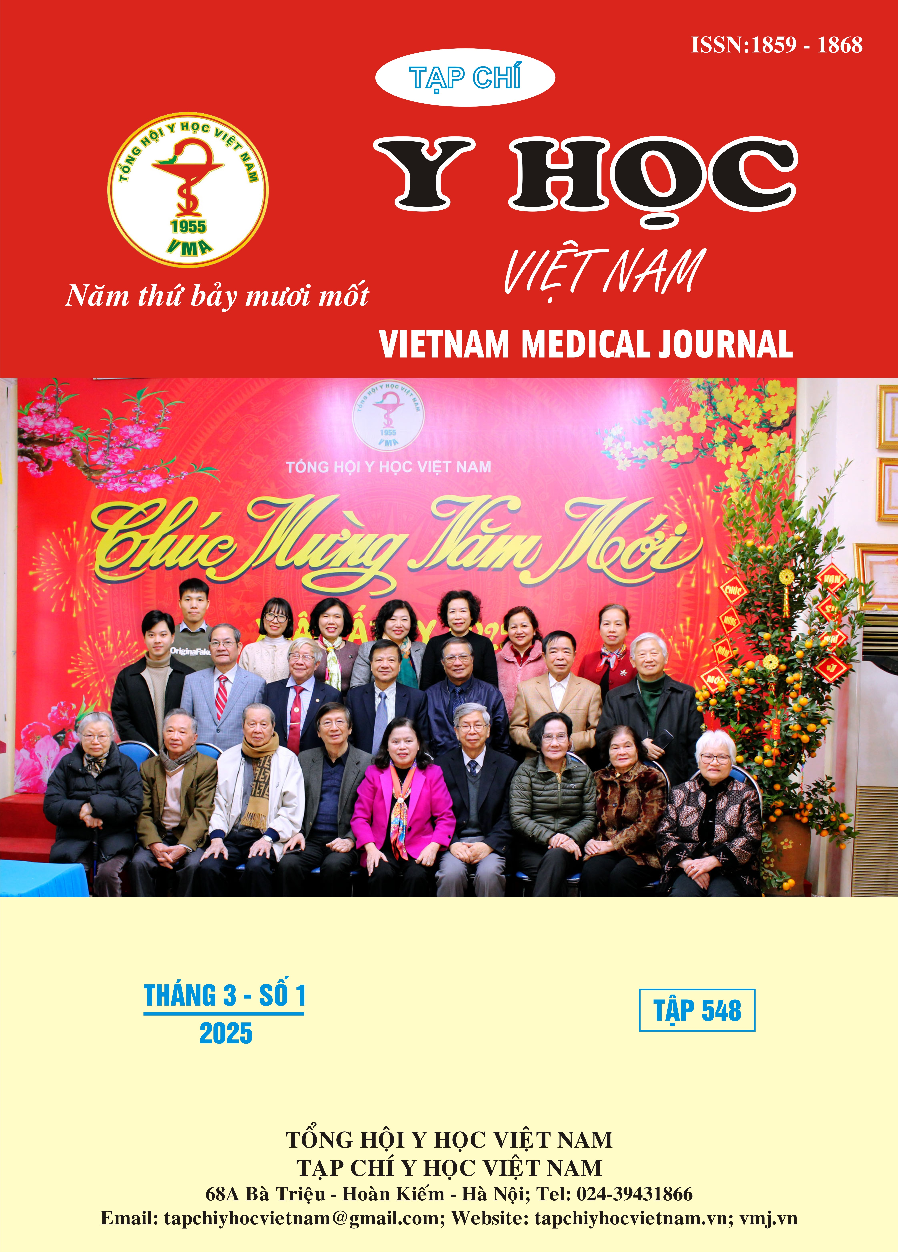PHẪU THUẬT CẮT MỘT PHẦN CƠ MU TRỰC TRÀNG HAI BÊN ĐỂ ĐIỀU TRỊ LOẠN HIỆP ĐỒNG CƠ SÀN CHẬU: BÁO CÁO 04 TRƯỜNG HỢP VÀ TỔNG QUAN TÀI LIỆU
Nội dung chính của bài viết
Tóm tắt
Đặt vấn đề: Điều trị táo bón do co thắt cơ mu trực tràng thường bắt đầu bằng liệu pháp phản hồi sinh học và tiêm độc tố Botulinum vào cơ mu trực tràng. Những bệnh nhân không đáp ứng với điều trị bảo tồn, có thể cần phải phẫu thuật. Mục tiêu: Báo cáo này nhằm mục đích đánh giá kỹ thuật cắt một phần cơ mu trực tràng trong điều trị táo bón do cơ thắt cơ mu trực tràng. Đối tượng và phương pháp nghiên cứu: Một nghiên cứu hồi cứu được thực hiện tại Khoa Hậu môn – Trực tràng Bệnh viện Đại học Y Dược Thành phố Hồ Chí Minh, từ 10/2020 đến 10/2024, với những bệnh nhân bị táo bón do loạn hiệp đồng không đáp ứng với điều trị bảo tồn, được đánh giá lâm sàng, thực hiện đo áp lực hậu môn, phản xạ đại tiện, nghiệm pháp tống bóng, MRI động học sàn chậu và được cắt một phần cơ mu trực tràng ở cả hai bên. Đánh giá kết quả dựa vào sự cải thiện các triệu chứng và sự hài lòng của bệnh nhân. Kết quả: Tổng cộng có 4 bệnh nhân (2 nam), có độ tuổi trung bình là 51,7 ± 15,1 tuổi, được đưa vào nghiên cứu. 3/4 bệnh nhân cho thấy sự cải thiện đáng kể về các triệu chứng sau 3 tháng phẫu thuật. Điểm Altomare trung bình giảm đáng kể (p = 0,023) từ 16,8 ± 3,1 xuống 7,5 ± 7,1 sau 3 tháng phẫu thuật. Đa số bệnh nhân (3/4) rất hài lòng sau phẫu thuật. Không có bệnh nhân nào xảy ra biến chứng. Kết luận: Cắt một phần cơ mu trực tràng hai bên là một kỹ thuật hiệu quả trong việc xử lý táo bón do co thắt cơ mu trực tràng với kết quả khả quan và tỷ lệ biến chứng thấp. Cần nhiều trường hợp với thời gian theo dõi dài hơn để xác nhận hiệu quả của phương pháp phẫu thuật này.
Chi tiết bài viết
Tài liệu tham khảo
2. Abdelnaby M, Fathy M, Mikhail HM, Maurice KK, Arnous M, Emile SH. Partial division of puborectalis muscle with lateral internal sphincterotomy: a novel surgical technique for management of anal hypertonia‐associated anismus. World Journal of Surgery, 2021, 45(4): 1210-1221. doi: 10.1007/s00268-020-05919-y
3. Aziz I, Whitehead WE, Palsson OS, et al. An approach to the diagnosis and management of Rome IV functional disorders of chronic constipation. Expert Review of Gastroenterology & Hepatology, January 2020, 14(1): 39-46. doi:10.1080/17474124.2020.1708718
4. Farid M, Youssef T, Maghdy T, et al. Comparative study between botulinum toxin injection and partial division of puborectalis for treating anismus. International Journal of Colorectal Disease, 2009, 24: 327-334. doi: 10.1007/s00384-008-0609-7
5. Goeschen K, Gold DM. Surgical cure of chronic pelvic pain, associated bladder & bowel symptoms by posterior sling in 198 patients validates the Pescatori iceberg principle of pelvic symptoms co-occurrence. Pelviperineology, 2017, 36: 84-88.
6. Hoffman MJ, Kodner IJ, Fry RD. Internal intussusception of the rectum. Diagnosis and surgical management. Diseases of the Colon & Rectum, 1984, 7: 435-441. doi: 10.1007/ BF02555532
7. Nehra V, Bruce BK, Rath DM, et al. Psychological disorders in patients with evacuation disorders and constipation in a tertiary practice. American Journal of Gastroenterology, 2000, 95: 1755-1758. doi: 10.1111/j.1572-0241.2000.02184.x
8. Pescatori M. A modified myotomy of the puborectalis for anismus. Techniques in Coloproctology, 2023, 27(6): 507-512. doi: 10.1007/s10151-022-02748-0


